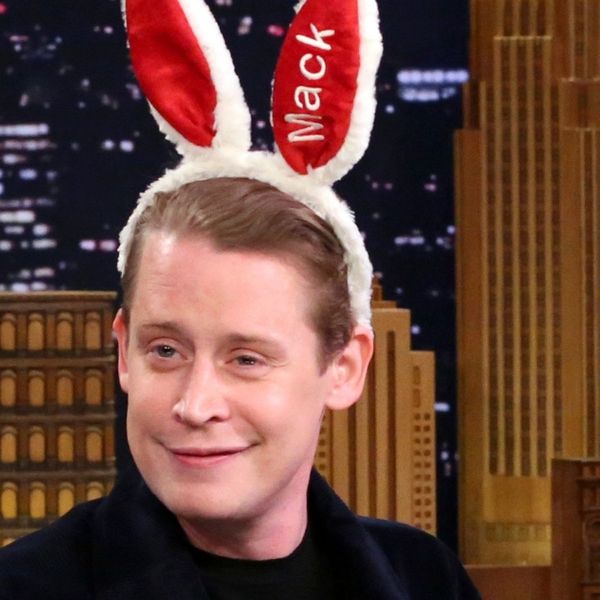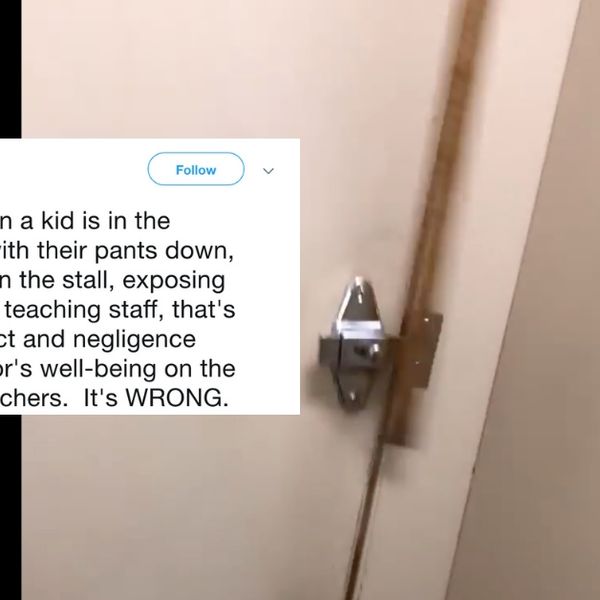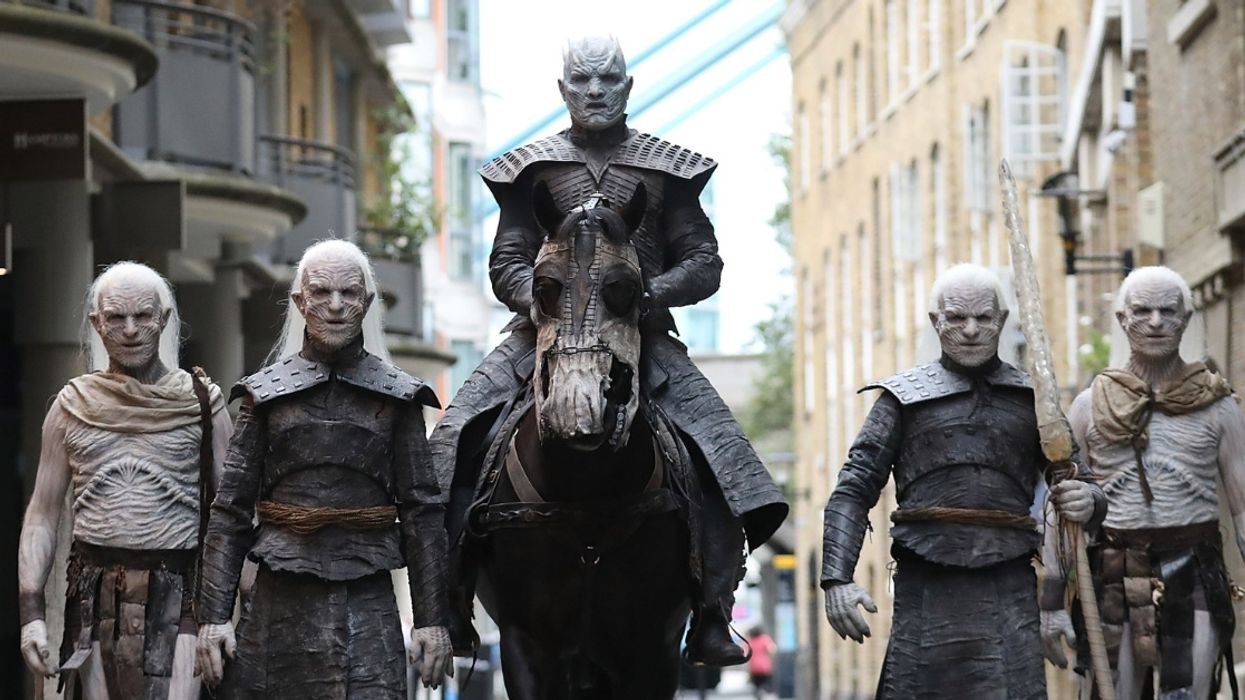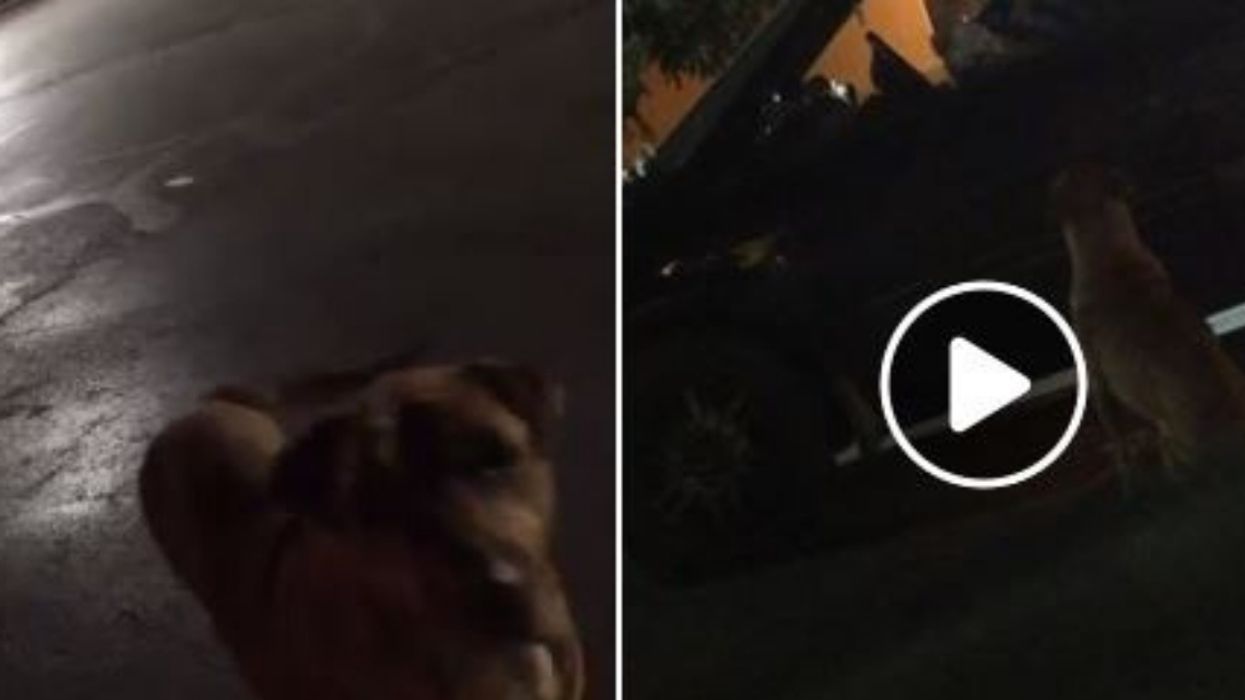October, 2002, LOS ANGELES - September was a month rich with resonance from the past. The shock and terror of a year ago still haunts us with silent anxiety. The media, though, was not so quiet. The air was filled with reminders of the horrors of September 11, 2001. There were for me, however, other reminders of other events from history that brought a larger context.
The month began for me with a visit to Sacramento, California. The trip took me back to another kind of horror that occurred almost sixty years ago. I went to my state capital for a reunion of the people interned during World War II in the American internment camp for Japanese Americans in northern California called Tule Lake. That was one of the two camps in which my family and I were incarcerated simply because of our Japanese ancestry. I was the keynote speaker at the reunion banquet. I spoke of my childhood memories of my years of confinement at Tule Lake. I also spoke of the power of our American democracy to learn from and heal the wounds of its past errors. Where else is there a government where the victims of the violation of our civil liberties can initiate a process for redress, with the effort led by Japanese American legislators in the U.S. Congress who themselves had been incarcerated? Where else is there a nation with its Constitutional principals set so shiningly high that its history has been a constant work-in-process? To the elderly people there at that banquet with memories of internment and to the younger people there with searching, inquiring minds about that history, I made the point that ours is a participatory democracy that calls for and is crucially dependent on the involvement of good, principled citizens.
 My next trip was to Hawaii. This one took me a few more months further back into history. It was here in Oahu that the attack that precipitated the war occurred at Pearl Harbor. That attack also ignited the hysteria that put Japanese Americans into those internment camps. I had the honor of serving as co-master of ceremonies, together with the first Miss Universe from Hawaii, Angela Baraquio, of a concert called the Aloha Peace Concert. The program was dedicated to world peace sponsored by the International Committee of Artists for Peace. The featured performers were the great jazz artists, pianist Herbie Hancock and saxophonist Wayne Shorter. The show was a huge success and played to a sold-out house.
My next trip was to Hawaii. This one took me a few more months further back into history. It was here in Oahu that the attack that precipitated the war occurred at Pearl Harbor. That attack also ignited the hysteria that put Japanese Americans into those internment camps. I had the honor of serving as co-master of ceremonies, together with the first Miss Universe from Hawaii, Angela Baraquio, of a concert called the Aloha Peace Concert. The program was dedicated to world peace sponsored by the International Committee of Artists for Peace. The featured performers were the great jazz artists, pianist Herbie Hancock and saxophonist Wayne Shorter. The show was a huge success and played to a sold-out house.
The irony, however, of a peace concert in the city where an historic war began was compelling. Herbie, Wayne, and I, together with members of the International Committee of Artists for Peace, made a pilgrimage to the Arizona Memorial at Pearl Harbor. The Hawaiian afternoon was bright and sunny but the atmosphere was solemn as a special U.S. Navy barge took us out to the Arizona Memorial where 1,177 sailors are entombed in the sunken ruins of the battleship, USS Arizona. Floral wreaths had been prepared for us to present to those who perished in the devastating surprise attack. My wreath was on behalf of the Japanese American National Museum. I approached the marble wall etched with the names of those sailors whose bodies lie in the waters just below us. It was these men -- most of them mere boys -- who made the ultimate sacrifice so that we could be there advocating for peace. It was a deeply moving experience.

 My final trip of the month was to Washington, DC and the autumn Board of Trustees meeting of the Japanese American National Museum. We had recently become an affiliate of the Smithsonian family of museums, so we scheduled this meeting in a conference hall at the National Museum of American History on the great mall. This trip was also an opportunity for me to connect with more current history.
My final trip of the month was to Washington, DC and the autumn Board of Trustees meeting of the Japanese American National Museum. We had recently become an affiliate of the Smithsonian family of museums, so we scheduled this meeting in a conference hall at the National Museum of American History on the great mall. This trip was also an opportunity for me to connect with more current history.
 The Memorial to Japanese American Patriotism during World War II had recently been completed near the Capitol building. The Memorial is made up of a long granite wall with the names of the 10 internment camps and the number of people incarcerated in each. Further down the wall are the names of all the Japanese American soldiers who died fighting for this country in World War II. In the center of the plaza is a sculpture of two cranes caught up in a tangle of barbed wire struggling to reach for the sky. The names of the two camps where I, together with my family, was incarcerated, Rohwer in Arkansas and Tule Lake in California, happened to be placed right next to each other. The irony and the power of this newest of monuments in our national capital is deeply personal to me as well as gravely important to our nation.
The Memorial to Japanese American Patriotism during World War II had recently been completed near the Capitol building. The Memorial is made up of a long granite wall with the names of the 10 internment camps and the number of people incarcerated in each. Further down the wall are the names of all the Japanese American soldiers who died fighting for this country in World War II. In the center of the plaza is a sculpture of two cranes caught up in a tangle of barbed wire struggling to reach for the sky. The names of the two camps where I, together with my family, was incarcerated, Rohwer in Arkansas and Tule Lake in California, happened to be placed right next to each other. The irony and the power of this newest of monuments in our national capital is deeply personal to me as well as gravely important to our nation.
At the conclusion of our board meeting, our Museum hosted a symposium addressing the aftermath of September 11th. The participants were Secretary of Transportation Norman Mineta, who happens also to be a trustee of our Museum, and photojournalist Stan Honda, who captured some of the iconic images of the horrors at the World Trade Center on that devastating day. I served as the moderator. Intrinsic to any discussion of September 11th by Japanese Americans is dialogue weighing civil liberty with national security. The generational perspectives brought to the discussion by Secretary Mineta, who had himself been incarcerated during the World War II and Honda, who had not yet been born at the time, added another dimension to the discussion. Nevertheless, there was agreement that our government made a severe Constitutional error then and that Japanese Americans have a singular responsibility to do all that we can to prevent that from being repeated with another group of people just because they happen to "look like the enemy."
The travels of September took me on a time journey from the immediate history of a year ago to those of more than six decades past, then full circle round back to a discussion on the responsibilities we bear as Americans today. We must not forget the lessons from our history. It was a full and thought-provoking month of travels.
George R.R. Martin Just Confirmed A Popular 'Game Of Thrones' Fan Theory About White Walkers
Game of Thrones scribe George R.R. Martin is promoting his new book in the A Song of Ice and Fire series, and provided insight into a group of characters fans have been waiting to learn more about.
As an author known to inject symbolism into the fantastical worlds he creates, Martin revealed that the icy group of White Walkers from Game of Thrones personified climate change.
What the ancient humanoid race of icy creatures stand for is a concept many have theorized all along.
Now fans received confirmation from the author himself.
Martin may have prognosticated climate change while he was writing GoT. The cold that transcends upon Westeros sounds eerily familiar.
"It's kind of ironic," Martin told the New York Times.
"Because I started writing 'Game of Thrones' all the way back in 1991, long before anybody was talking about climate change."
"But there is — in a very broad sense — there's a certain parallel there. And the people in Westeros are fighting their individual battles over power and status and wealth."
He added:
"And those are so distracting them that they're ignoring the threat of 'winter is coming,' which has the potential to destroy all of them and to destroy their world."
"And there is a great parallel there to, I think, what I see this planet doing here, where we're fighting our own battles. We're fighting over issues, important issues, mind you — foreign policy, domestic policy, civil rights, social responsibility, social justice. All of these things are important."
Martin continued:
"But while we're tearing ourselves apart over this and expending so much energy, there exists this threat of climate change, which, to my mind, is conclusively proved by most of the data and 99.9 percent of the scientific community. And it really has the potential to destroy our world."
"And we're ignoring that while we worry about the next election and issues that people are concerned about, like jobs."
Marten stressed the importance of caring for the environment, adding that protecting it should be a top priority.
"So really, climate change should be the number one priority for any politician who is capable of looking past the next election."
"We spend 10 times as much energy and thought and debate in the media discussing whether or not N.F.L. players should stand for the national anthem than this threat that's going to destroy our world."
When the author was asked if he could "pick the best real-world, present-day match — politicians, celebrities" and pair them up with corresponding characters from his novels, Martin answered: "Pass."
Fire and Blood: 300 Years Before a Game of Thrones, is expected to be released on November 20.
H/T - NYtimes, Twitter, Mentalfloss
This Brand's Tweet History Is A Hilariously Fitting Representation Of A Brand's Life Cycle 😂
Carl's Croutons tried their hand at social media to advance their brand.
But their objective got derailed when their tweet ignited a confusing thread that sent everyone down the rabbit hole.
@topherflorence captured highlights from the thread that received over three thousand retweets for its zaniness alone.
Can you follow?
the history of every brand on twitter somehow https://t.co/fWVXsElCvr— D🌑CFUTURE (@D🌑CFUTURE) 1540403954.0
The bread crumbs company endeavored to stir excitement for the brand by encouraging participation with the following tweet:
"Taking our first steps on the www!! tell us your favorite crouton recipes! #croutons #yum"
Harmless, right?

But somewhere along the way, the brand mixed business with politics. @religiousgames noticed that Carl's Croutons issued a one-word directive: vote.
The Twitter user asked, "What does it mean?"
@topherflorence What does it mean? https://t.co/IKifvva7ba— Vincent Gonzalez (@Vincent Gonzalez) 1540408943.0
Did the Carl's Croutons account manager get his social media account wires crossed? Possibly. But then we're not sure.
@topherflorence responded by saying, "lol that wasn't me i would posted something way dumber."
@religiousgames lol that wasn't me i woulda posted something way dumber— D🌑CFUTURE (@D🌑CFUTURE) 1540409220.0
The following tweet from Carl's Croutons attempted damage control:
"Carl's Crutons [sic] regrets the inappropriate tweet from earlier and we sincerely apologize to the people of The Republic of Malta."

So how did Carl's Croutons insult the Republic of Malta?
@topherflorence @oggborbis ...how did they insult Malta? I need to know.— astronaatti (@astronaatti) 1540405285.0
@Bestorb shed some light on why the Southern European island country may have been insulted by sharing a YouTube clip of episode 1008, "Final Justice," from Mystery Science Theater 3000.
Did it have something to do with the country's dominant population of women?
@astronaatti @topherflorence @oggborbis https://t.co/9imm31y8cM— Nick Bestor (@Nick Bestor) 1540429565.0
The thread spun off in all different directions.

@topherflorence @xoxogossipgita laughing hardest at crouton recipes— super normal internet (@super normal internet) 1540492558.0

@topherflorence That last one is life 🙌🏽— Rich F. Santiago (@Rich F. Santiago) 1540418084.0
@topherflorence WOW this was a ride.— Jackal's Husband, Yuko (@Jackal's Husband, Yuko) 1540405005.0
@ItsBobberto @topherflorence @austin_walker Late stage social media.— Mr. Jackpots (@Mr. Jackpots) 1540435914.0
There were many takeaways from the esoteric thread, but the one directive really stood out.
@topherflorence @MaxKriegerVG Haha, you got me. But seriously, vote.— Benoit Doidic (@Benoit Doidic) 1540414697.0
@topherflorence @zoebread Clever girl. https://t.co/i5VB74s8F9— brott rambler but spooky (@brott rambler but spooky) 1540478919.0
@topherflorence @NoraReed This was a wild ride.— Queer Eye for the Animorphs Reboot (@Queer Eye for the Animorphs Reboot) 1540412903.0
@topherflorence @seangentille I’m experiencing a new level of cringe right now— Helle Hansen 🌸 (@Helle Hansen 🌸) 1540423182.0
@topherflorence @ZaaackKoootzer This is the greatest thing I've seen all day— your very own monica bellucci dream (@your very own monica bellucci dream) 1540406700.0
@topherflorence @spacetwinks Optimistic engagement. Regret. 'How do you do, fellow kids.' Unity through shared outr… https://t.co/6VGrLNPZVp— Ink-stained @ MFF 2018 (@Ink-stained @ MFF 2018) 1540405582.0
@topherflorence @spacetwinks 2 is where they decided to hire a social media manager. 3 is when they decided to hire a different one.— Ink-stained @ MFF 2018 (@Ink-stained @ MFF 2018) 1540412100.0
@LaserBlade @topherflorence yeah i actually think they're pretty good croutons but then again they pay me to say that— cool dog mowing lawn (@cool dog mowing lawn) 1540436982.0
@topherflorence @mattfx This is magically funny like Goofy doing an unannounced set in a small black room— M💎R (@M💎R) 1540482697.0
@topherflorence @ZaaackKoootzer This is the greatest thing I've seen all day— your very own monica bellucci dream (@your very own monica bellucci dream) 1540406700.0
There's still an unanswered question.
@topherflorence I need to know the Malta story tho— NeoSorosbot (@NeoSorosbot) 1540423045.0
So who is Carl's Croutons anyway? Nobody knows. Just vote.
Clever Dog Tricks McDonald's Customers Into Feeding Her By Pretending To Be A Stray 😂
It's a dog eat dog world out there and sometimes a girl has to do what a girl has to do. At least that's what one dog owner realized when she caught her pooch trolling the streets looking for an easy meal.
Facebook user Betsy Reyes busted her dog Princess who was out moonlighting as a stray in order to play on the sympathies of strangers. It seems Princess likes to wander off to her favorite hangout, the local McDonald's, and work the drive through lane like a pro.
And that's what she did right up until Reyes busted her scam. Reyes, who lives in Oklahoma City, took to Facebook and outed Princess in the most hysterical way, saying:
"If you see my dog @ the McDonald's on shields, quit feeding her fat ass bc she don't know how to act & be leaving the house all the time to go walking to McDonald's at night. She's not even a stray dog. She's just a gold diggin ass bitch that be acting like she's a stray so people will feel bad for her & feed her burgers."
Lots of scammers out there.
@CBSNews My lab Would jump the fence every morning as I got ready to work and when I went to leave he would reappea… https://t.co/NJhg4ZuGq1— Anneik 💛 (@Anneik 💛) 1540434345.0
@CBSNews https://t.co/UqWvClKi8z— Bruinlover- follower of Nakia (@Bruinlover- follower of Nakia) 1540418292.0
@CBSNews I TOOK MINE TO THE DRUGSTORE AND WHILE I WAS PAYING HE STOLE A CANDY BAR, WALKED RIGHT OUT THE DOOR WI… https://t.co/U3DlWunzcK— PUEBLO294 (@PUEBLO294) 1540415919.0
@LCaro294 @CBSNews Mine stole a butterdish at my mum’s house, ate all the butter then buried the butterdish to hide the evidence.— Tricoteuse (@Tricoteuse) 1540418005.0
@CBSNews My dog would 100% do this if she could get out of the house. On our walks she stands in the doorways of fo… https://t.co/33ovz44HUX— Skulls&Bacon (@Skulls&Bacon) 1540420511.0
@BillichThomas @skullsandbacon @CBSNews 100% would hand over my bagel, if only because she looks so annoyed with me… https://t.co/aQs5qKhETN— Claire Pettie (@Claire Pettie) 1540434235.0
It's an adorable story, but maybe get the dog a collar with identification?
@CBSNews Pretends? Leaves the collar stashed around the corner, or what?— Jim Snell (@Jim Snell) 1540429214.0
@CBSNews This is adorable but this dog should 100% be wearing a collar and also get microchipped! Love this story :)— Minka “ACAB” Eisenhower (@Minka “ACAB” Eisenhower) 1540418766.0
Not everyone thought the story was cute.
@CBSNews Great way to keep your dog safe. 🙄— 🧚🏻♂️ Free Hugs 🌊 🇺🇸🇳🇴🇫🇮☮️⚛️ Ⓥ🌱😷 (@🧚🏻♂️ Free Hugs 🌊 🇺🇸🇳🇴🇫🇮☮️⚛️ Ⓥ🌱😷) 1540414161.0
@CBSNews Unless you can keep your dog safe at home and not out in traffic where she could be hit by a car, stolen,… https://t.co/6BMPMLYgYs— Lindsey McBride (@Lindsey McBride) 1540435397.0
Of course, when a girl's gotta eat, a girl's gotta eat.
@chabsmescudi Funny.... but time to build a super gate. https://t.co/NZBE1s3lm6— OEL𝕊𝕂𝕐 (@OEL𝕊𝕂𝕐) 1540238320.0
@chabsmescudi The dog: https://t.co/FSmeFYhspT— Angie (@Angie) 1540231585.0
@BetsysReyes @chabsmescudi Your dog every night after standing on the road https://t.co/mrTCMOtOVA— N.A.S.A (@N.A.S.A) 1540235406.0
@chabsmescudi I would have been mad if my dog didn’t bring anything back. https://t.co/qb7ED7cwMG— Name Change (@Name Change) 1540325221.0
Let's hope Princess has learned her lesson and stays home.
H/T: Huffington Post, Mashable
This Creepy Robot Phone Attachment Moves Just Like A Real Human Finger
Tapping on and swiping your mobile device just got a whole lot creepier thanks to an unnecessary invention. But there's clearly a market for these kinds of things, amirite?.
Introducing – MobiLimb, a finger-like attachment to your phone or tablet that aims to make your life easier and give you nightmares in the process.
The MobiLimb was created by researchers in France and is made up of "five servo motors, an Arduino microcontroller and a sensor, and it can do a number of unsettling things that are straight out of nightmares," according to Engadget.
MobiLimb: Augmenting Mobile Devices with a Robotic Limb #UIST2018 @ACMUIST https://t.co/vm0fqHe2ga— HCI Research (@HCI Research) 1538308062.0
Marc Teyssier, a PhD student and one of the researchers behind the project for the dismembered limb, legitimized its existence.
"In the spirit of human augmentation, which aims at overcoming human body limitations by using robotic devices, our approach aims at overcoming mobile device limitations (static, passive, motionless) by using a robotic limb."
@HacksterPro @marcteyssier This is terrible.— Jason TheVirtualFAE (@Jason TheVirtualFAE) 1538435690.0
Th MobiLimb can prop itself up so you can watch a video, or provide an alternate way to grip your device.
But there's one function that is really disturbing.
The articulated digit can be skinned to resemble a human finger, and it can stroke your wrist while you're using your phone.
Someone implied that single people could benefit from this invention as a companion.
@Gingerheaddad Keep in mind that many people are alone, so any physical contact... #Yuck #Creepy #WhatTheHell— Ephraim Gopin (@Ephraim Gopin) 1538743523.0
"Reach out and touch someone": MobiLimb is awesome. https://t.co/HPq6FsefJv https://t.co/Dq7h7sSSCR— Bryan Alexander (@Bryan Alexander) 1538839006.0
What would the next-generation MobiLimb offer consumers?
@EphraimGopin I was hoping it would go full face-hugging alien. I better wait for the upgraded MobiLimb.— Jim Martin (@Jim Martin) 1538744153.0
@HCI_Research @ACMUIST https://t.co/qsY5O1Y0Ud— Henri Fischer (@Henri Fischer) 1538322698.0
@arduino https://t.co/h90xJNrwvH— Femtoduino (@Femtoduino) 1538511034.0
The attachment could come in handy should an unfortunate life-changing incident were to occur.
@HCI_Research @ACMUIST I want this! Not for the reason in some of the tweets below but you never know. I could use… https://t.co/C5inclfv8t— Kristina (Kricket) Hodgdon (@Kristina (Kricket) Hodgdon) 1538330323.0
But the gadget is still giving people goosebumps.
@HacksterPro @marcteyssier That is creepy. =)— GritsnGravy (@GritsnGravy) 1538412080.0
@MailOnline @JonathanHoenig That is terrifying.— W. Clayton (@W. Clayton) 1538811801.0
Others saw a more erotic potential.
@HacksterPro @marcteyssier Lol, the adult videos Industry is interested— Dario Glz (@Dario Glz) 1538690202.0
@HacksterPro @marcteyssier "why does your phone have a penis?"— Nolimb chan (@Nolimb chan) 1538413674.0
@theprojecttv Or, if your date searching goes awry, it could stroke whatever you want!— Matthew Barker🏳️🌈 (@Matthew Barker🏳️🌈) 1538717283.0
@MailOnline https://t.co/2SRRzsM72I— Matt ™ 🎃 (@Matt ™ 🎃) 1538811840.0
Now here's a function not advertised by MobiLimb's creators.
@EphraimGopin The MobiLimb is a terrible name. It should be named after its most important function: Bird Flipper.— Jim Martin (@Jim Martin) 1538743026.0
@Gingerheaddad Now THAT'S putting it to good use! Flip people off without taking your eyes off the screen. Perfect.— Ephraim Gopin (@Ephraim Gopin) 1538743134.0
Feelings are mixed. But the jury is in.
To be honest I don't like MobiLimb. But the point really is, I could be wrong.— Dr. Kenneth Huang (@Dr. Kenneth Huang) 1538801646.0
As to why such a creepy gadget was invented, we can't quite put our finger on it. But then, when it comes to consumers' needs, these guys may be out of touch.
















